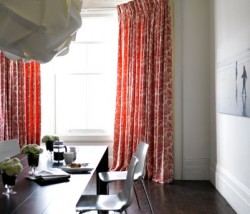You’ve probably heard lots of advice on the importance of color - its psychological effect on a room, the way it draws the eye, and how light colors make a space seem larger. While all of this is helpful, it’s often difficult to translate when it comes to decorating your own home. If you’re like most people, choosing a color palette comes down to selecting a few hues that you consistently love and some accent colors that complement them. One good way to do this is to use a neutral base palette and bring color into the room through accessories.
Keep in mind how the color makes you feel, and be sure it suits the room’s function. Pay attention to the modern furniture colors and designs. If blue gives you the blues, it doesn’t matter that it’s a “good” color for a bedroom. There’s a wealth of information available about the effects of color: red makes us feel energized, blue makes a room seem cooler, pastels are quieting, and deep purples evoke creativity. But the trick is to focus on your own reaction to color. Does it appear calming? Sensual? Clean and fresh, or spicy and exotic? You can give a bedroom these attributes simply by using a color that evokes these feelings.
To gain confidence with color, use some simple design tricks. First of all, start slowly; bringing a new color scheme into your home is something that takes getting used to. Introduce small doses of a hue you like, in accessories such as a lamp or a vase. If you’re happy with the hue, gradually incorporate larger expanses of the color into the room’s decor: use it in bedding or slipcovers, or paint an old dresser or wooden chair. If you’re feeling daring, go straight for the walls - or paint just one wall. Featuring color on one wall can have a significant impact. Fortunately, paint is relatively inexpensive, so the consequences of changing your mind aren’t too great.
Perhaps you are drawn to vibrant shades of ochre and crimson in the fall and hues of green and pink in the spring. Choose a color scheme that accommodates your changing preferences. If you establish a neutral background, you can accent it with bedding, drapes, area rugs, and other accents of color. In this way, you can easily transform the feel of your bedroom from an autumnal enclave to a cheery summer space.
Also, take a cue from what’s inside your closet. Hues that you instinctively gravitate toward tend to make you look and feel your best. The same colors that work well in your wardrobe can often work wonders for you in your home.
 Even the most elaborate curtains can work to your detriment if they obscure any of the glass behind them. Far too many expensive custom valances hang low over the top of the window, wiping out part of the sky.
Even the most elaborate curtains can work to your detriment if they obscure any of the glass behind them. Far too many expensive custom valances hang low over the top of the window, wiping out part of the sky.
